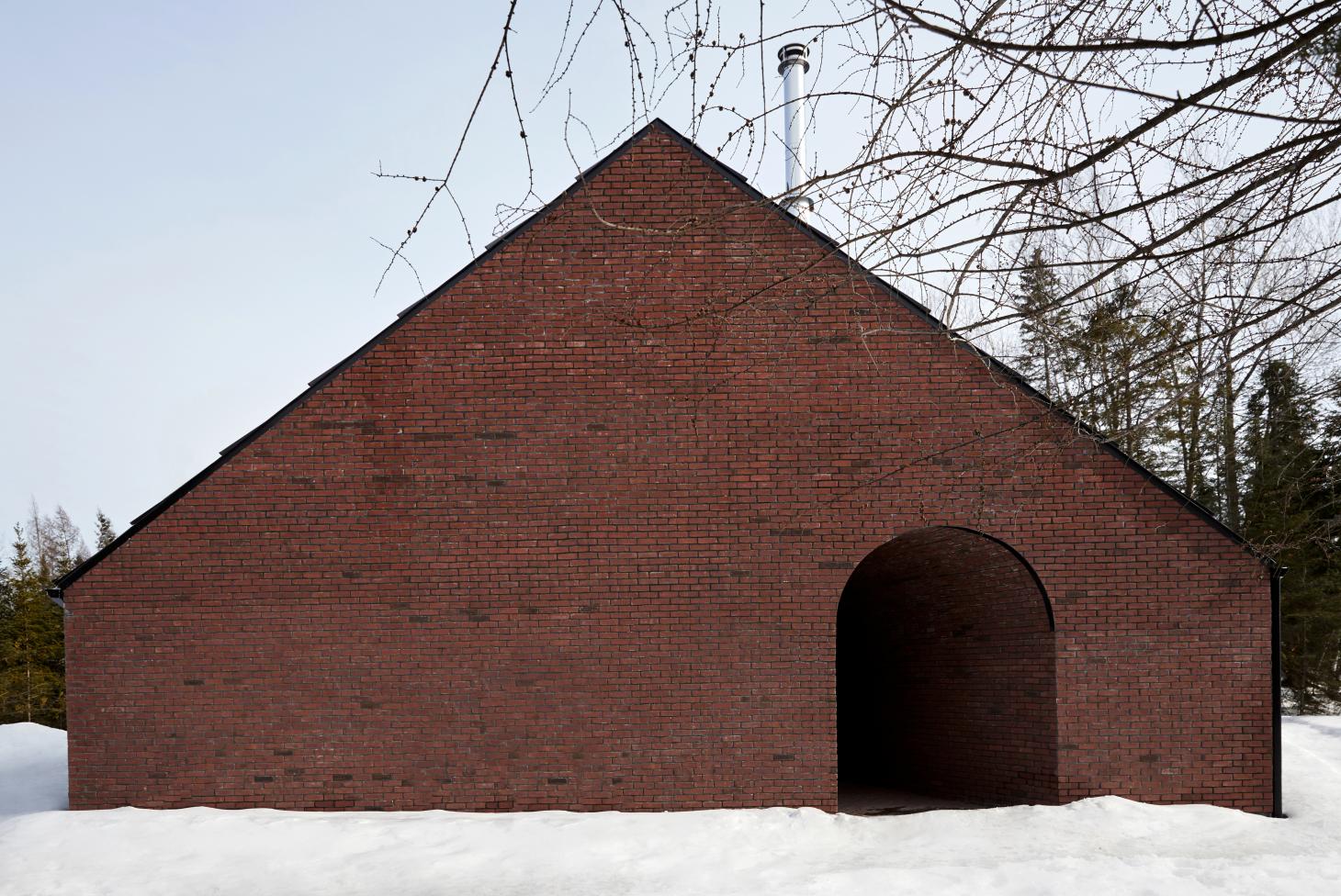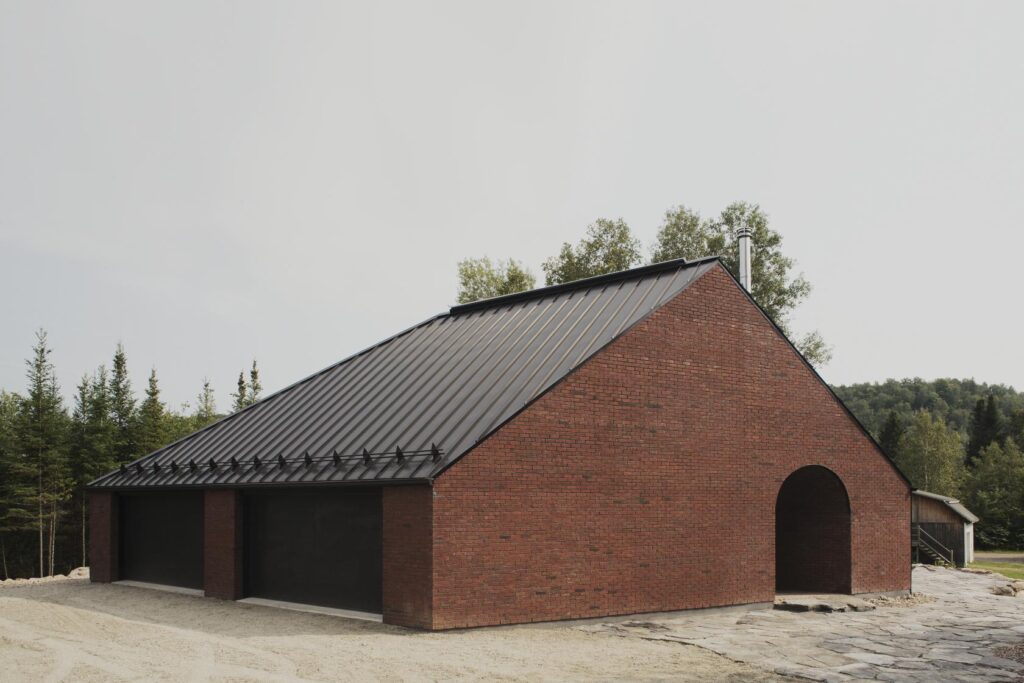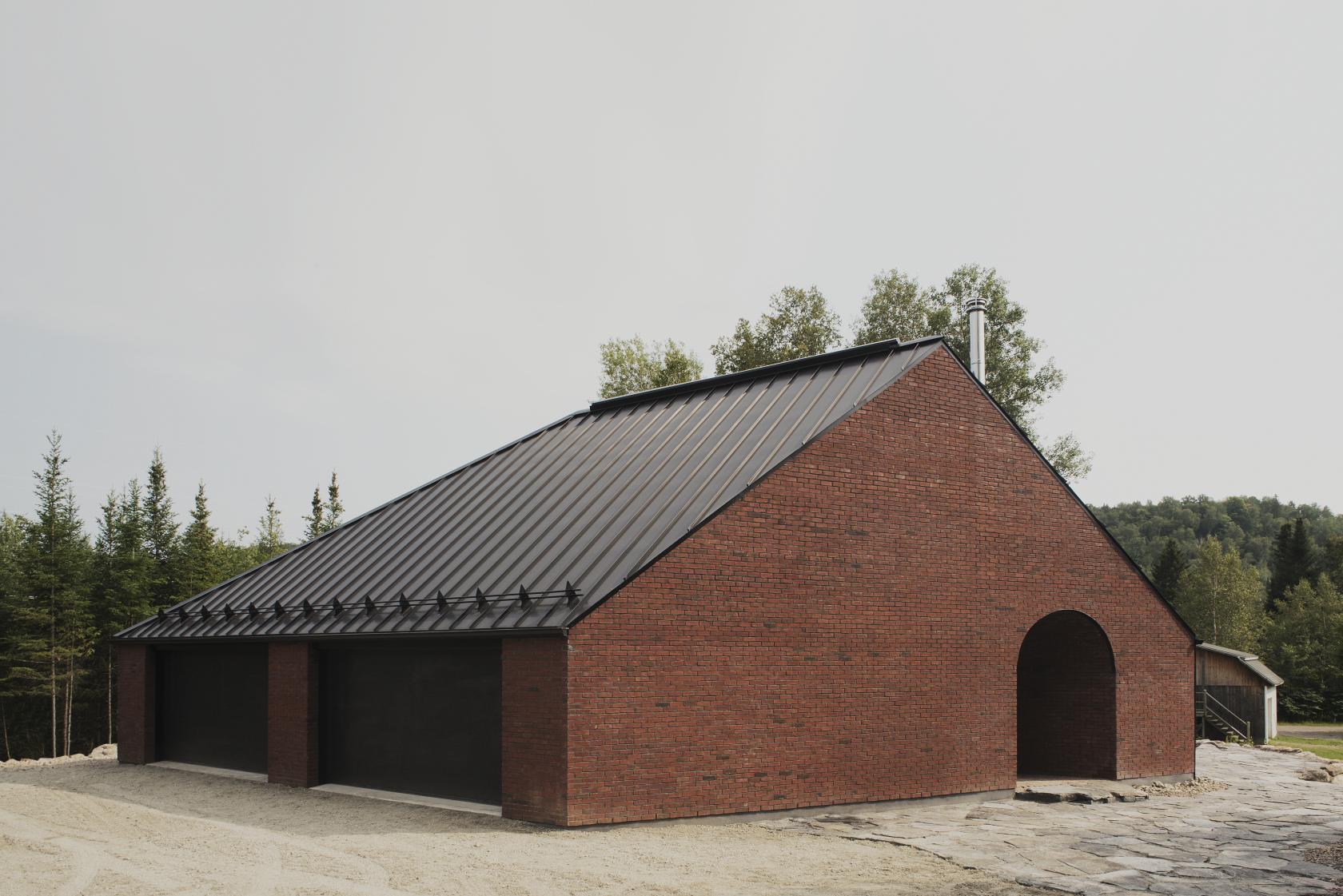Maison Gauthier combines two highly coveted architectural qualities; a strong contemporary character, through its clean, geometric minimalism and masterful use of materials, and a powerful sense of place, as it sits rooted in its rural locale bringing to mind agricultural buildings (stables and horse-breeding centres were among its creators’ key references).
Designed by Cécile Combelle and Antonio Di Bacco’s Atelier Barda, the project, located in Quebec’s Laurentians region, is not only a highly accomplished piece of architectural work; it also holds a special place in the architects’ heart. ‘[It] is certainly the project that best defines our current residential practice,’ they say. ‘It is the culmination of a process linking our clients’ great confidence in our ideas with close collaboration with the contractor during construction.’

Photography: Maxime Desbiens
The clients, a passionate potter, and a retired business executive, outlined a brief for a private residence that includes a ceramics studio. Their love for American minimalist painters influenced the house’s simple geometric shapes in the design of the interior volumes, says the team. ‘We immediately appreciated the contrast between their interest in raw, minimalist art, the rustic character of farm stables and the elegance of horses and the equestrian world.’
An asymmetric V shaped floorplan combines two distinct wings, one for the studio and another for the garage, with a generous living area at the heart of the composition. A curved corridor connects the two wings.
Soft lines and tactile, raw materials (notably brick, lime and oiled oak) create an interior that feels both modern and cocooning. Attention to detail and immaculate craftsmanship are also key in the overall feel; which comes naturally for an architecture studio that works on all scales and also features a product design division.
‘We consider this house to be characteristic of our current architectural practice, because it expresses the phenomenological, intuitive, analogue approach as well as the idiosyncrasies of our studio’s unique design vocabulary,’ say the architects. §






